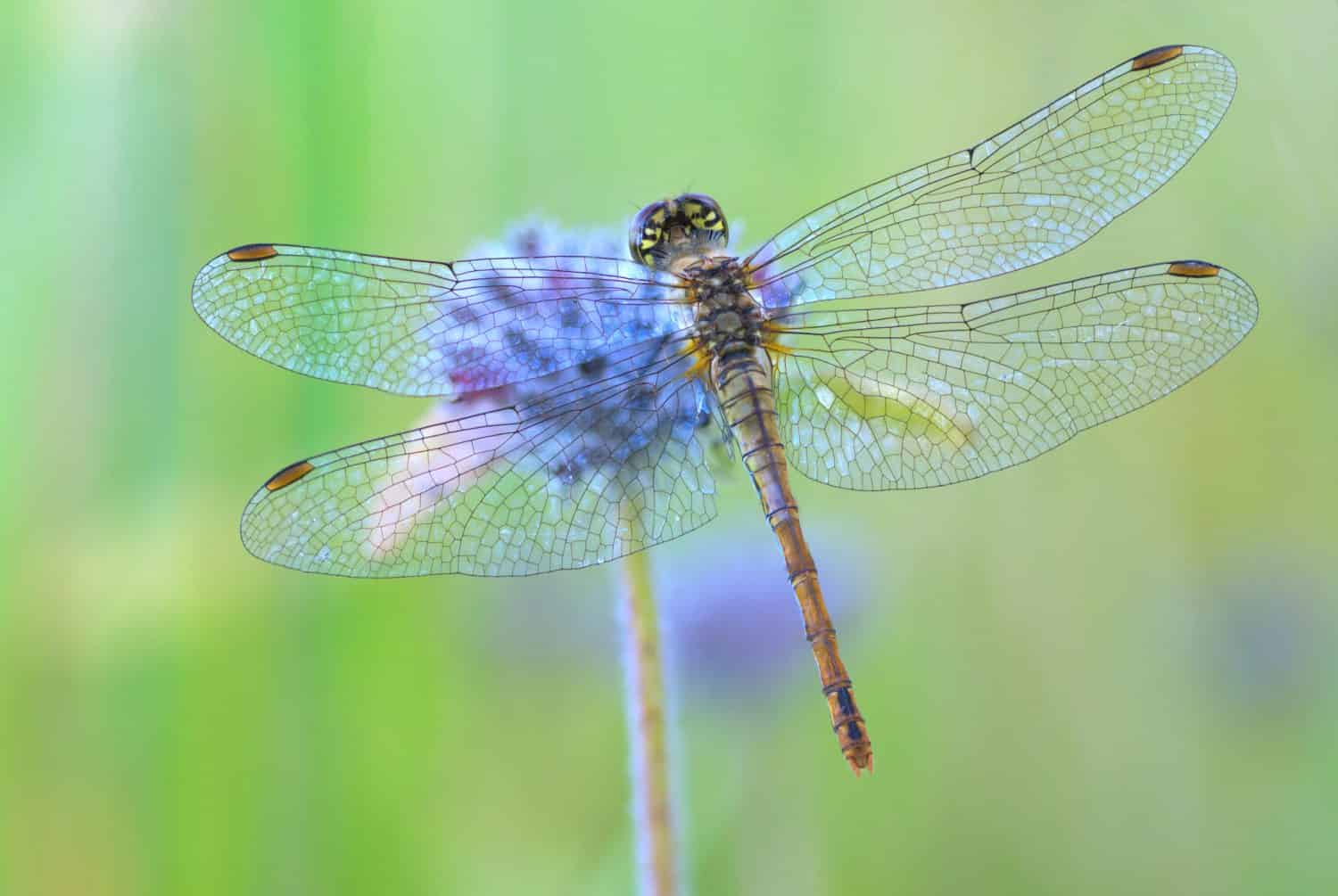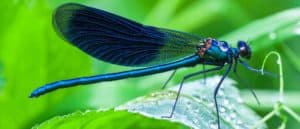There are more than 5,000 species of dragonfly worldwide and they vary in size and color. The largest dragonfly is over five inches in length! Their lifecycle requires them to live near bodies of water such as streams, lakes, and rivers. However, if you have a pond in your yard, they may also pay you a visit! The bigger the pond the better and they also like it to be in full sun. But don’t fill it with fish! You can also buy certain types of plants that attract dragonflies.
Their wings have an iridescent or metallic appearance which is extraordinarily beautiful, making them a popular visitor to people’s gardens. Many people find them fascinating. So, why not combine some stunning blooms with these colorful visitors? Flowers provide resting places for dragonflies, they also attract insects that the dragonflies like to eat. Here is a list of 12 flowers that dragonflies find irresistible.
Water Lily
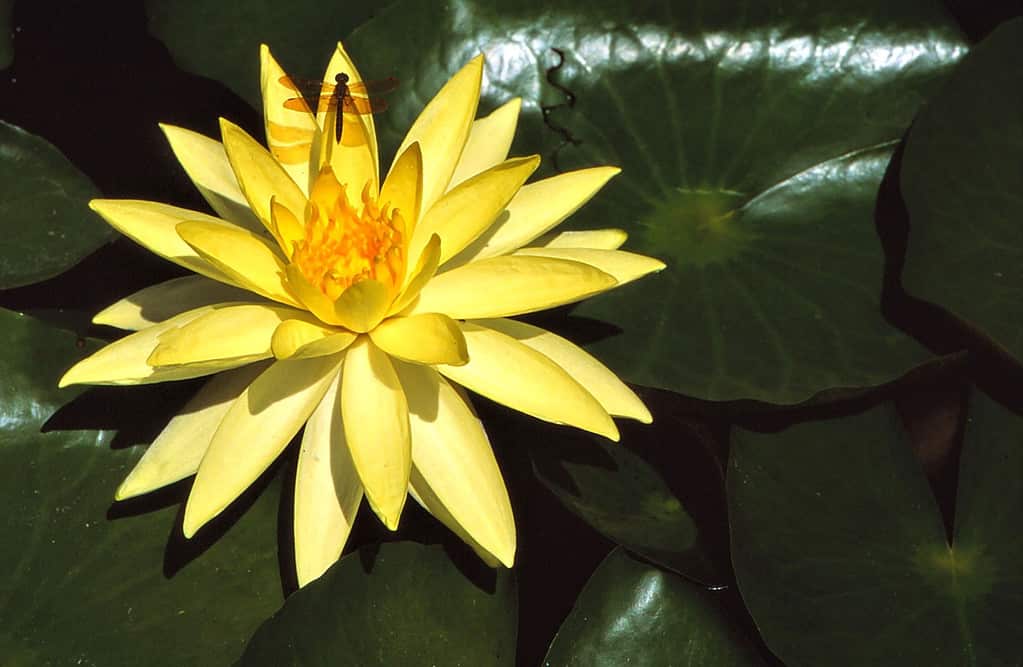
Dragonflies lay their eggs on water lilies.
©Richard Jackson/iStock via Getty Images
- Nymphaeaceae
- Location: calm and small ponds or large containers.
- Top tip: plant rhizome in an upright position.
Broadleaf Arrowhead

Broadleaf arrowhead flowers attract dragonflies and bees.
©passion4nature/Shutterstock.com
- Sagittaria latifolia
- Location: semi-aquatic with full sun to partial shade.
- Top tip: remove the yellowing or dead leaves to keep it growing.
Black-Eyed Susan

Black-eyed Susan flowers are rich in nectar that attracts dragonflies.
©LauraTabor/iStock via Getty Images
- Rudbeckia hirta
- Location: under full sun or partial shade.
- Top tip: they do best in well-draining soil.
Yarrow
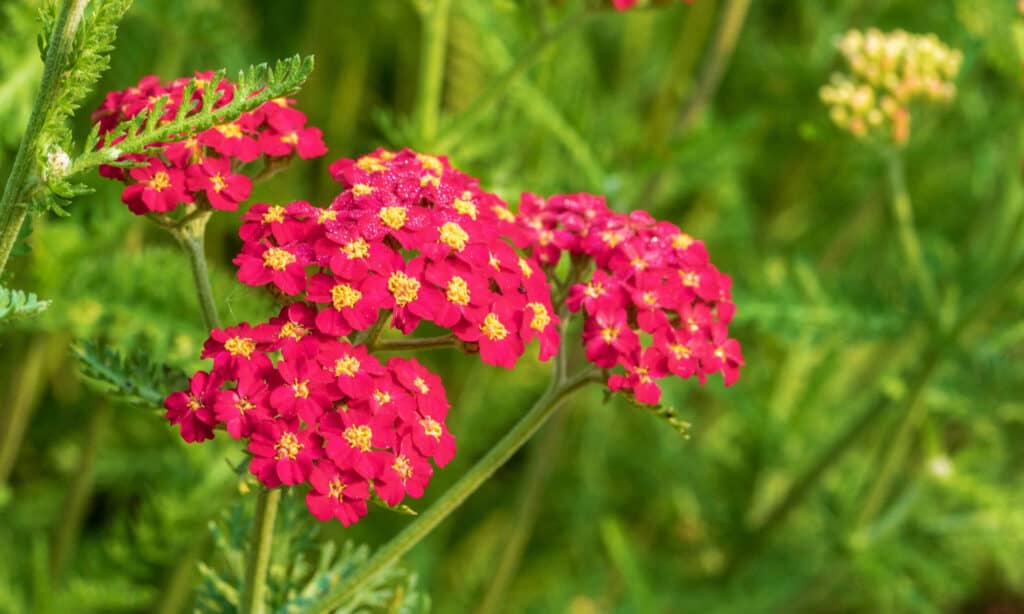
Yarrow are low-maintenance flowering plants that attract dragonflies.
©Jennifer Yakey-Ault/Shutterstock.com
- Achillea millefolium
- Location: full sun and well-draining soil.
- Top tip: prune any deadhead flowers to maintain growth.
Swamp Milkweed

Swamp milkweed can provide a great resting spot for dragonflies.
©iStock.com/Cynthia Shirk
- Asclepias incarnata
- Location: a sunny spot with moist to wet soil.
- Top tip: you must water regularly during the first growing season.
Pickerelweed

Pickerelweed is a dragonfly-attracting flower with blooms from summer to fall.
©Gert-Jan van Vliet/Shutterstock.com
- Pontederia cordata
- Location: shallow ponds, marshes, or the edges of water bodies.
- Top tip: keep removing decaying or yellowing parts of the plant.
Joe Pye Weed
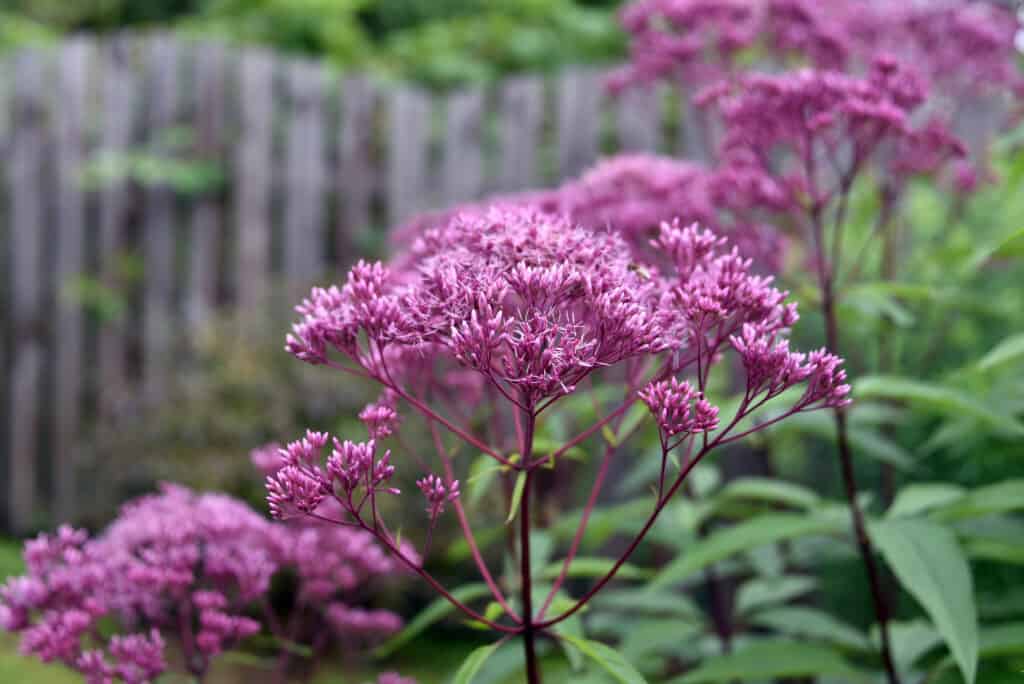
Joe Pye weed has nectar-rich blossoms that dragonflies love.
©Andrey_Nikitin/Shutterstock.com
- Eutrochium pupureum
- Location: full sun to partial shade.
- Top tip: in dry climates, it needs water regularly – especially in the first growing season.
Borage
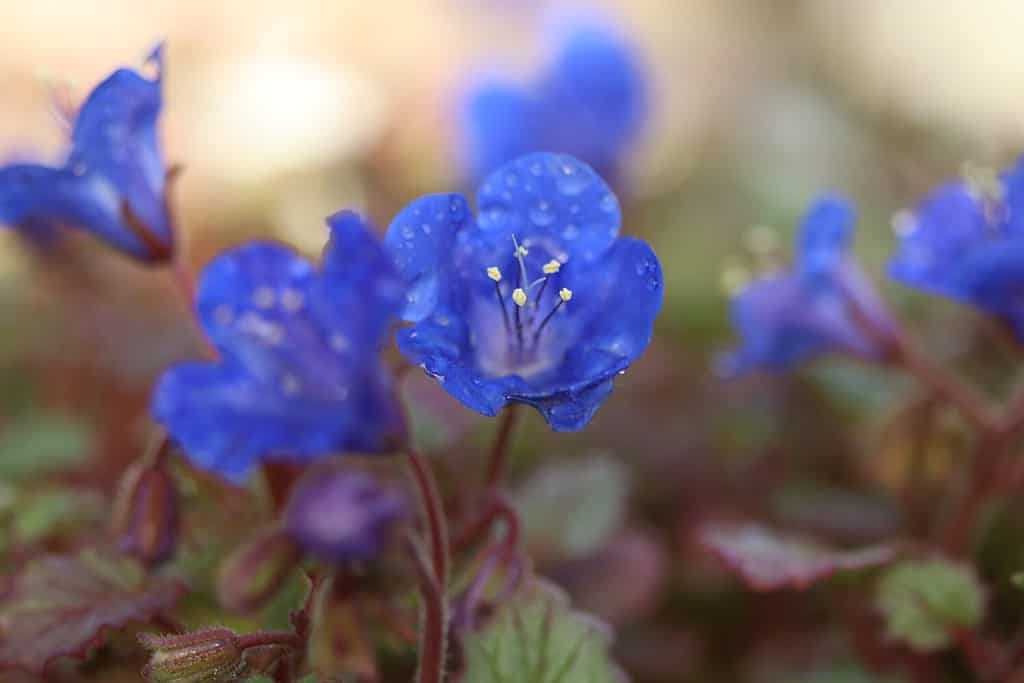
Borage is a fast-growing and easy-to-care plant that attracts dragonflies.
©Whats in a name/Shutterstock.com
- Borago officinalis
- Location: full sun in constantly moist soil.
- Top tip: keep it healthy by removing dead flowers and foliage.
Meadow Sage

Meadow sage blooms throughout the summer and into the fall attracting dragonflies.
©olko1975/Shutterstock.com
- Salvia pratensis
- Location: full sun, well draining soil.
- Top tip: wilted foliage and dead flowers should be removed.
Purple Coneflower
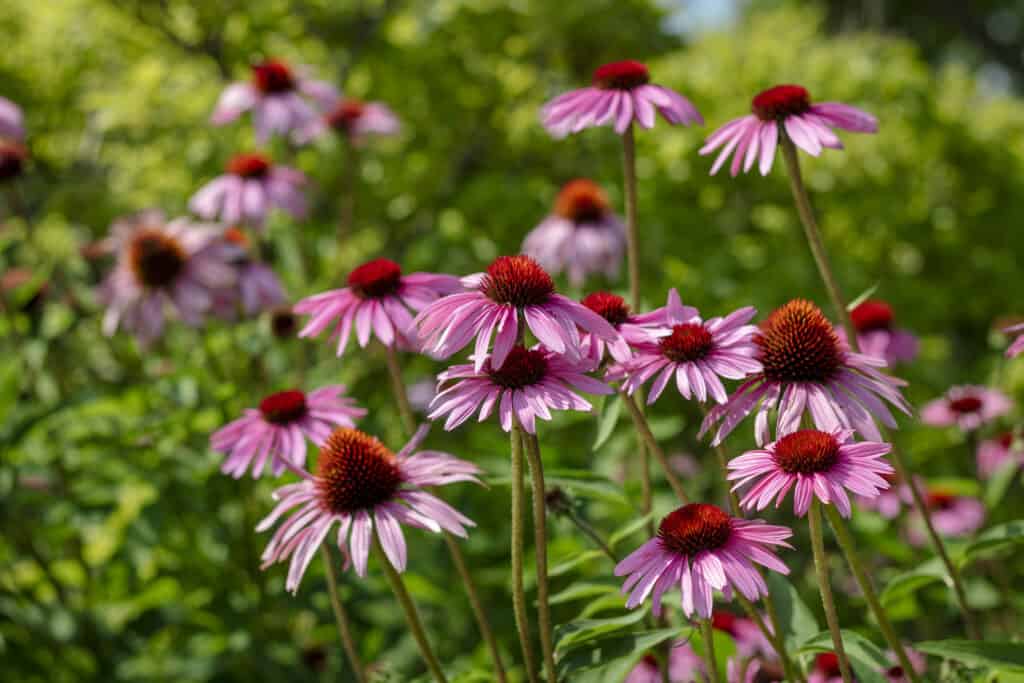
Purple coneflowers are native to North America and produce dragonfly-attracting flowers.
©iStock.com/Air Footy
- Echinacea purpurea
- Location: full sun or partial shade.
- Top tip: water regularly until the plant is established.
Aster
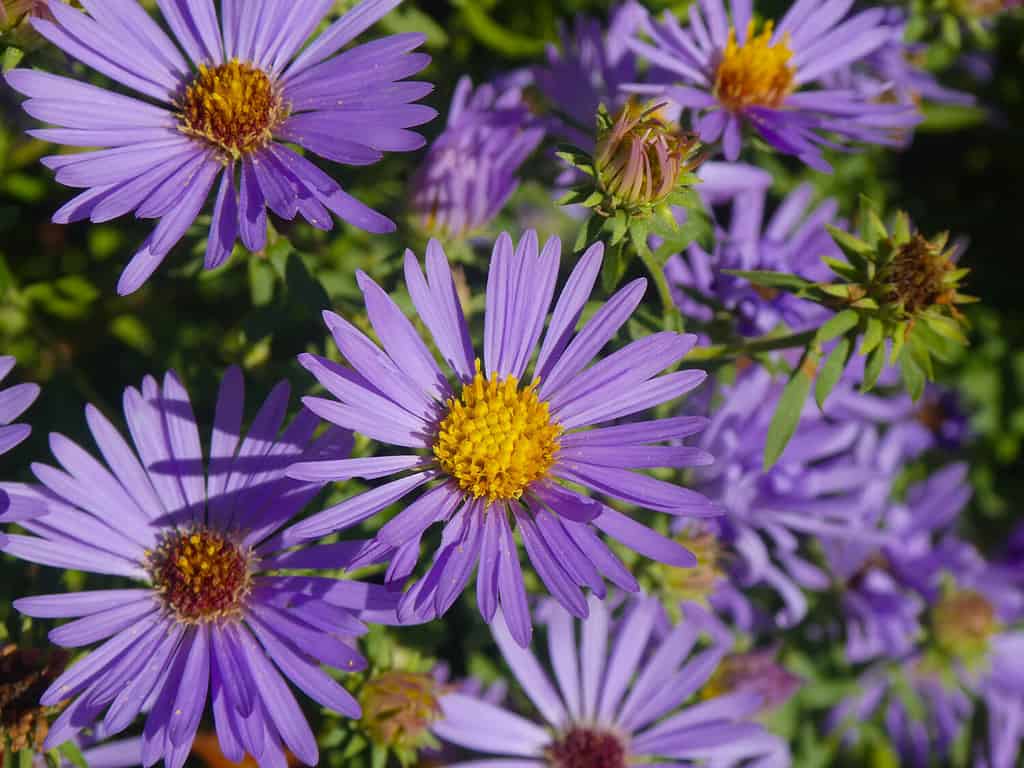
Aster thrive around water sources such as ponds which also attract dragonflies.
©ForestSeasons/Shutterstock.com
- Symphyotrichum spp
- Location: full to partial sunlight.
- Top tip: Plant in loamy well drained soil.
Wild Celery

Wild Celery provides a useful surface for dragonflies to lay their eggs on.
©ESB Essentials/Shutterstock.com
- Vallisneria americana
- Location: full, partial sunlight.
- Top tip: Likes clay, loamy, sandy soil.
Thank you for reading! Have some feedback for us? Contact the AZ Animals editorial team.

